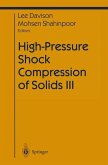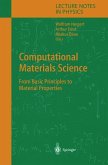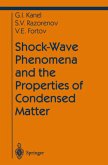This book is the first of several volumes on solids in the Shock Wave Science and Technology Reference Library. These volumes are primarily concerned with high-pressure shock waves in solid media, including detonation, high-velocity impact, and penetration. Of the eight chapters in this volume three chapters survey recent, exciting experimental advances in
- ultra-short shock dynamics at the atomic and molecular scale (D.S. More, S.D. Mcgrane, and D.J. Funk),
- Z accelerator for ICE and Shock compression (M.D. Knudson), and
- failure waves in glass and ceramics (S.J. Bless and N.S. Brar).
The subsequent four chapters are foundational, and cover the subjects of
- equation of state (R. Menikoff),
- elastic-plastic shock waves (R. Menikoff),
- continuum plasticity (R. M. Brannon), and
- numerical methods (D. J. Benson).
The last chapter, but not the least, describes a tour de force illustration of today's computing power in
- modeling heterogeneous reactive solids at the grain scale (M.R. Baer).
All chapters are each self-contained, and can be read independently of each other, though they are of course thematically interrelated. They offer a timely reference, for beginners, as well as professional scientists and engineers, on the foundations of shock waves in solids with new viewpoints, and on the burgeoning developments.
- ultra-short shock dynamics at the atomic and molecular scale (D.S. More, S.D. Mcgrane, and D.J. Funk),
- Z accelerator for ICE and Shock compression (M.D. Knudson), and
- failure waves in glass and ceramics (S.J. Bless and N.S. Brar).
The subsequent four chapters are foundational, and cover the subjects of
- equation of state (R. Menikoff),
- elastic-plastic shock waves (R. Menikoff),
- continuum plasticity (R. M. Brannon), and
- numerical methods (D. J. Benson).
The last chapter, but not the least, describes a tour de force illustration of today's computing power in
- modeling heterogeneous reactive solids at the grain scale (M.R. Baer).
All chapters are each self-contained, and can be read independently of each other, though they are of course thematically interrelated. They offer a timely reference, for beginners, as well as professional scientists and engineers, on the foundations of shock waves in solids with new viewpoints, and on the burgeoning developments.








